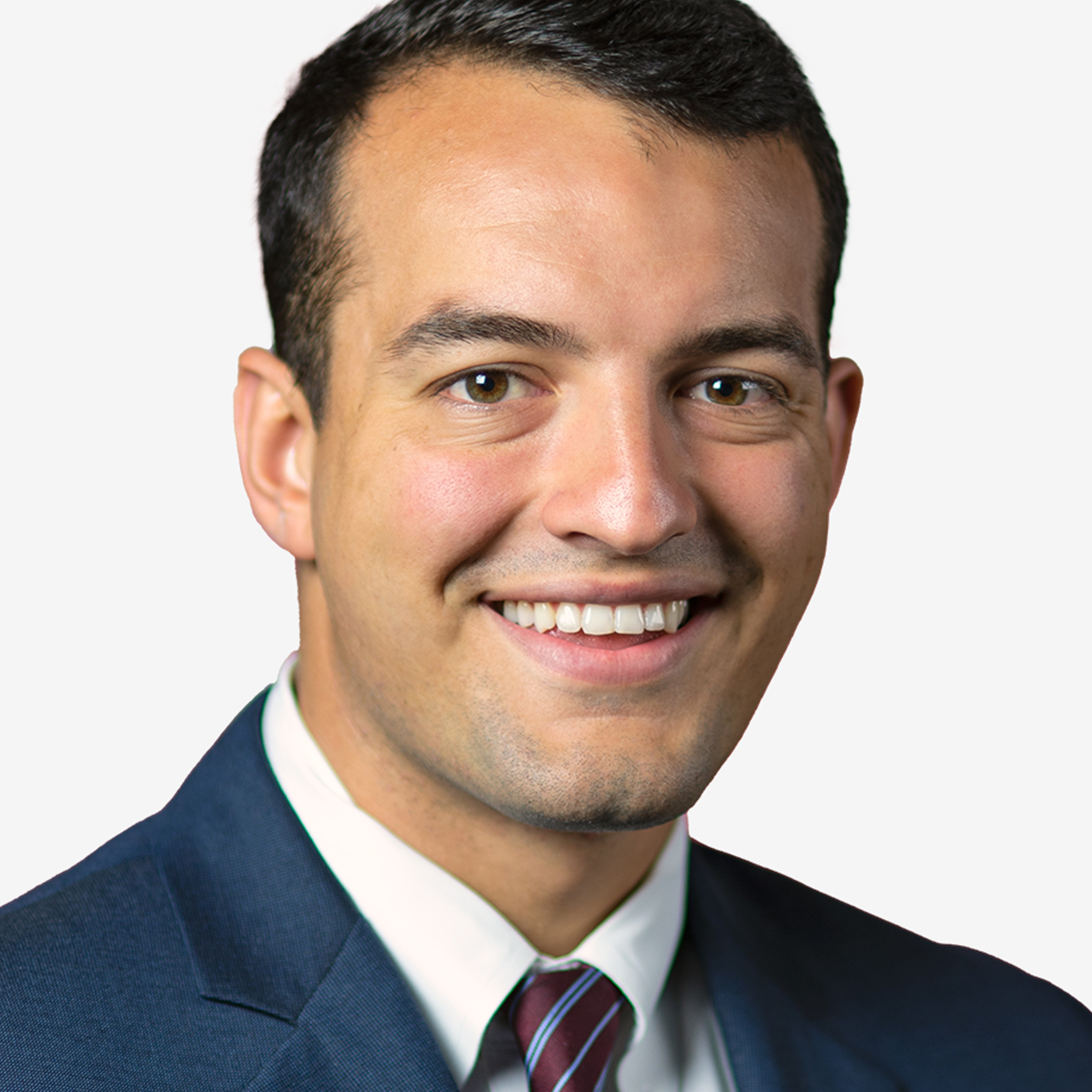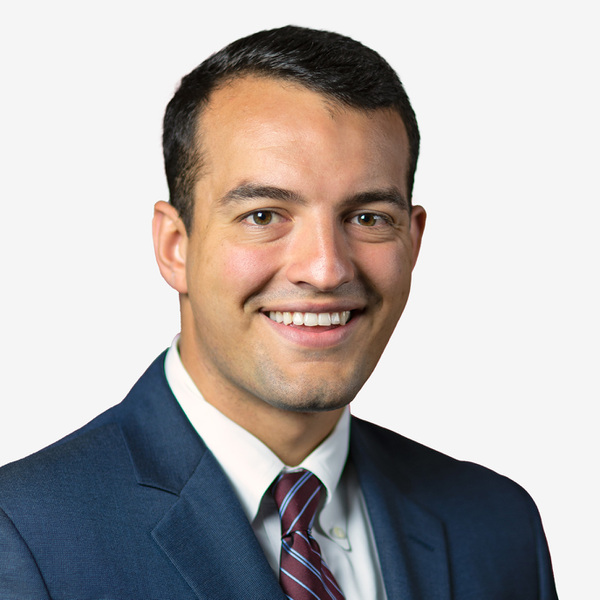From Ozempic to “pet parents” to artificial intelligence (AI), the healthcare industry has a variety of investment opportunities. On behalf of our next gen newsletter, The Fresh Take, Brown Brothers Harriman Relationship Manager Michael O’Connor sat down with Principal and Senior Equity Analyst Hayley Xuereb to talk about some industry hot topics and investment themes.
Michael O'Connor: When you look at the healthcare industry as a whole, what subsectors or types of businesses do you find most attractive? In other words, what makes a “good” healthcare investment?
Hayley Xuereb: At BBH, we seek great businesses with outstanding management teams, attractive financial profiles, loyal customers, and leadership positions in businesses that provide essential products and services. There are some unique aspects of the healthcare industry that lead us to seek additional criteria in our investment process. For example, the healthcare industry is highly regulated, and the government is typically a large payer globally of healthcare products and services. Plus, U.S. healthcare spending is nearly 20% of GDP and growing, so there is often political pressure to rein in costs.
That said, we look for businesses that have limited exposure to cost containment efforts or have cash-paying businesses, such as our investments in Zoetis (animal health) and Alcon (eye care). One of our holdings, UnitedHealth Group, has pioneered the area of value-based care, which aims to reduce costs by focusing on the quality of services.
We also look for businesses that are innovative. Innovation is the lifeblood of the industry, and as regulators look to reduce costs, innovation will be increasingly important to justify and secure attractive reimbursement prices. We gravitate toward companies that allow science and medical needs to guide their research and development efforts and have demonstrated superior and sustained innovation over many years.
One of our holdings, Thermo Fisher Scientific, provides exposure to the attractive biopharmaceutical industry by creating products and services that are essential to drug discovery and development without taking on the risks and expenses of clinical trials. This helps us avoid the large concentration of risk inherent in drug discovery and development and therefore helps to avoid permanent loss of our capital.
MO: In our BBH U.S. Large Cap Equity Strategy, we invest in a variety of healthcare companies. What helped you gain conviction in these businesses?
HX: These businesses fit our investment criteria well and operate in some of the most attractive areas of healthcare. They’re leaders in their industries with sustainable competitive advantages, high returns on invested capital, and substantial opportunities to reinvest in their businesses to continue to compound future returns at attractive rates. As an industry specialist, I have the luxury of being able to identify, evaluate, and appreciate their favorable business position and value proposition within the healthcare market.
We’ve also owned some of these businesses for a very long time and have developed a great relationship with the management teams, who also appreciate us as long-term shareholders. Prior to purchasing these stocks, we conducted extensive research on the businesses, spoke with various members of the management team, their competitors, customers, and suppliers, and visited their operations. We incorporate these data points in our valuation, which is based on free cash flow. Once we become shareholders, we continue to evaluate these investments with the same due diligence.
MO: As we think about trends in healthcare, we have to talk about the rise in interest in GLP-1 drugs like Ozempic.
HX: GLP-1 drugs for weight loss are the hottest topic in healthcare today. The GLP-1 class is expected to be the largest pharmaceutical franchise in the history of the industry, with peak annual revenue of more than $100 billion. In my decades of experience in this industry, I can’t think of a previous comparable drug market that can help frame the massive market potential for these drugs.
The poster child for this class of drugs is Ozempic, which is all over the news and social media. Why has it attracted so much attention? There are a few reasons.
- The unmet medical need in obesity is substantial. Over the past 50 years, worldwide obesity rates have nearly tripled, with more than one in eight people being clinically obese. This has created a public health crisis so widespread and damaging that it is sometimes referred to as an epidemic. Sadly, obesity rates are expected to continue to grow.
- Obesity also affects every human organ system. It is associated with more than 200 possible health complications, including diabetes, sleep apnea, cardiovascular disease, and kidney disease. Up to 80% of the healthcare cost burden is linked to these diseases. It's not surprising that treating obesity helps address many of these comorbidities, as evidenced by the positive outcomes of these drugs in these other conditions.
- Ozempic and other GLP-1 drugs are very effective and provide an alternative to weight loss surgery, which is invasive and can lead to complications. The most serious side effects with GLP-1s are typically gastrointestinal-related and wane in severity over time. GLP-1 drugs have been on the market for nearly 20 years for treating diabetes, but it wasn’t until 2021 that the first obesity drug was approved in the U.S. So, from a safety standpoint, these drugs are somewhat de-risked. If there was a safety issue related to GLP-1 drugs as a therapeutic category, we probably would have seen it by now.
MO: Aside from obesity, what are some of the most prominent trends in the industry?
HX: Containing costs has and will continue to dominate conversations in the industry given an aging population that is living longer and with more diseases. The Biden administration recently released prices for the first 10 prescription drugs that were subject to landmark negotiations with Medicare as part of the Inflation Reduction Act of 2022. The government estimates that the new prices could produce $6 billion in net savings for Medicare and would save Medicare enrollees $1.5 billion in out-of-pocket costs in 2026 alone.
It is a milestone in a controversial process that aims to make costly medications more affordable for older Americans, a policy the pharmaceutical industry has opposed. The list of drugs under Medicare price negotiation will increase every year by 15 to 20 drugs per year. We are curious to see how this evolves over time as it relates to the magnitude of future price cuts around important drug classes such as GLP-1s, how this will affect drug discovery by modality (oral vs. injectable drugs are treated differently under the law), and the actual magnitude of these net cost savings given the complexity and opaqueness of drug pricing.
Another important industry trend is litigation. The U.S. is one of the most litigious countries in the world, and that won’t change anytime soon. Not only do you have to consider direct costs associated with medical malpractice, but also the practice of defensive medicine through excessive and often unnecessary testing and treatment to avoid potential lawsuits. The vast sums that the industry pays to settle litigation is a massive ongoing factor in pricing. The opioid crisis, talc in baby powder, and infant formula litigation are just some recent examples.
MO: When it comes to healthcare, where is the next generation diverging from past generations in their consumer behavior?
HX: One area is pet care. While there is no doubt all generations of pet owners love their pets, their attitudes and behaviors toward animal health are different. Pet owners are trending younger, wealthier, and more focused on animal care. They often view themselves as “pet parents” and their pets as family members, emphasize holistic care, and seek convenience.
Importantly, this generation of owners grew up in the technological age and have meaningfully increased the shift to ecommerce shopping for things like prescription drugs for their pets. These owners tend to spend more than other age groups on their pets, especially on premium food and services, and are more likely to put their pet’s preferences before price.
Many of the medical innovations in human health have made their way to animals, such as cancer and osteoarthritis therapies – and someday, maybe even weight loss drugs. Today’s pets are living about 10% longer than a decade ago. In short, younger people owning more pets, spending more on those pets, and those pets living longer are all trends creating great tailwinds for the industry.
MO: If every other headline is about Ozempic, the other 50% of headlines are about AI. Where do you see AI’s influence most in this space?
HX: While AI is playing a role in pretty much all aspects of healthcare, this industry is unique when it comes to regulation. There are HIPAA privacy issues around patient health data, intellectual property issues, and ethical issues. How much can you rely on AI when a person’s life is at stake? Who is ultimately responsible?
We believe the industry will see the largest benefit through increased operational efficiency around administration simplification, data-enabled personalization made possible with advanced analytics, and clinical insight and intervention. In managed care, it is used in a variety of ways, such as advanced note-taking systems, and automating clinical workflow activities such as prior authorizations, coding, claims processing, and payment integrity.
While we believe that AI will help support care providers with avoiding misdiagnosis, we also believe that ultimate clinical decisions will always be made by a human, not a computer.
We also think there is benefit to the drug industry. Drug development has been an expensive, time-consuming, unpredictable endeavor. Bringing a drug to market from discovery through clinical trials is estimated to cost over $1 billion and take 10 to 15 years, with a high failure rate of around 90% due to efficacy or safety. Clinical trials consume about half the time and investment, and preclinical compound discovery, testing, and regulatory processes take up the other half.
The holy grail in drug development is to make the process better, shorter, and cheaper and to enable the development of more first-in-class compounds that can transform a treatment paradigm or cure a disease.
Due to the high value of intellectual property, biopharma companies are understandably unwilling to share their in-house data with competitors. This serves as a potential headwind to AI drug development. One area where you can see tangible benefits from AI is in patient recruitment for clinical trials, which is often the most time-consuming part.
While AI is an opportunity worth watching in healthcare, it is a difficult one to quantify in our investments. We believe it will create efficiencies across the industry but is still a nascent concept.
MO: From an asset allocation standpoint, how should newer investors view healthcare as part of their portfolio?
HX: As an industry, healthcare is an essential component of our lives with attractive investment merits. Therefore, I think exposure to the industry in one’s investment portfolio is important. If you’re looking to invest in individual stocks, you should perform your due diligence. As Warren Buffett said, “Never invest in a business you can’t understand.” That advice applies to all businesses, but it is particularly relevant in healthcare given the scientific and regulatory complexity.
As it relates to asset allocation in a diversified portfolio, I would use the S&P 500 as a benchmark for that. Over the last decade, healthcare as a percent of the S&P 500 has fluctuated from around 10% to 15% and has been the second or third largest sector in the index behind technology and financials. That’s a good place to start.
MO: Hayley, thank you for your time.
Contact Us
Brown Brothers Harriman & Co. (“BBH”) may be used to reference the company as a whole and/or its various subsidiaries generally. This material and any products or services may be issued or provided in multiple jurisdictions by duly authorized and regulated subsidiaries. This material is for general information and reference purposes only and does not constitute legal, tax or investment advice and is not intended as an offer to sell, or a solicitation to buy securities, services or investment products. Any reference to tax matters is not intended to be used, and may not be used, for purposes of avoiding penalties under the U.S. Internal Revenue Code, or other applicable tax regimes, or for promotion, marketing or recommendation to third parties. All information has been obtained from sources believed to be reliable, but accuracy is not guaranteed, and reliance should not be placed on the information presented. This material may not be reproduced, copied or transmitted, or any of the content disclosed to third parties, without the permission of BBH. All trademarks and service marks included are the property of BBH or their respective owners. © Brown Brothers Harriman & Co. 2024. All rights reserved. PB-07754-2024-09-19




